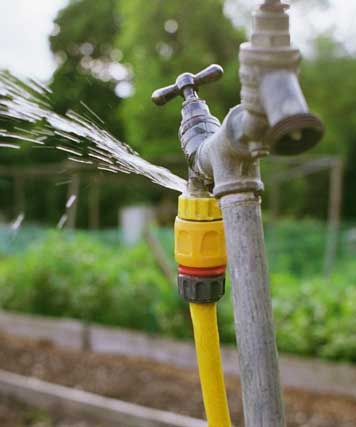6 Ways to Locate Concealed Water Leaks in Your Residence
6 Ways to Locate Concealed Water Leaks in Your Residence
Blog Article
We've discovered this great article about Detecting hidden plumbing leaks below on the internet and reckoned it made good sense to relate it with you in this article.

Early discovery of dripping water lines can mitigate a prospective disaster. Some little water leakages might not be visible.
1. Check Out the Water Meter
Every residence has a water meter. Checking it is a surefire way that helps you uncover leaks. For starters, turn off all the water resources. Ensure no one will certainly flush, use the tap, shower, run the washing equipment or dishwashing machine. From there, go to the meter and watch if it will transform. Since nobody is using it, there must be no motions. If it relocates, that shows a fast-moving leakage. If you find no adjustments, wait a hr or two as well as check back again. This means you might have a slow-moving leakage that might even be below ground.
2. Examine Water Usage
Evaluate your water bills and also track your water intake. As the one paying it, you must discover if there are any disparities. If you identify sudden changes, despite your intake coinciding, it means that you have leakages in your plumbing system. Keep in mind, your water costs must fall under the very same variety monthly. An abrupt spike in your expense indicates a fast-moving leakage.
A consistent increase every month, even with the very same practices, reveals you have a slow leakage that's likewise gradually escalating. Call a plumber to completely examine your home, specifically if you feel a warm location on your flooring with piping underneath.
3. Do a Food Coloring Examination
When it comes to water intake, 30% comes from bathrooms. If the shade in some way infiltrates your dish throughout that time without flushing, there's a leakage in between the container and also dish.
4. Asses Outside Lines
Do not neglect to inspect your outside water lines too. Should water permeate out of the connection, you have a loose rubber gasket. One little leakage can squander lots of water and spike your water costs.
5. Evaluate as well as Evaluate the Situation
House owners ought to make it a behavior to inspect under the sink counters and also inside closets for any type of bad odor or mold development. These two warnings suggest a leakage so timely attention is called for. Doing routine examinations, even bi-annually, can save you from a significant problem.
Check for stainings and compromising as a lot of home appliances as well as pipelines have a life expectations. If you suspect leaking water lines in your plumbing system, don't wait for it to intensify.
Early discovery of dripping water lines can reduce a prospective calamity. Some little water leakages might not be noticeable. Checking it is a surefire way that helps you find leaks. One small leak can squander loads of water as well as surge your water expense.
If you think leaking water lines in your plumbing system, don't wait for it to escalate.
WARNING SIGNS OF WATER LEAKAGE BEHIND THE WALL
PERSISTENT MUSTY ODORS
As water slowly drips from a leaky pipe inside the wall, flooring and sheetrock stay damp and develop an odor similar to wet cardboard. It generates a musty smell that can help you find hidden leaks.
MOLD IN UNUSUAL AREAS
Mold usually grows in wet areas like kitchens, baths and laundry rooms. If you spot the stuff on walls or baseboards in other rooms of the house, it’s a good indicator of undetected water leaks.
STAINS THAT GROW
When mold thrives around a leaky pipe, it sometimes takes hold on the inside surface of the affected wall. A growing stain on otherwise clean sheetrock is often your sign of a hidden plumbing problem.
PEELING OR BUBBLING WALLPAPER / PAINT
This clue is easy to miss in rooms that don’t get much use. When you see wallpaper separating along seams or paint bubbling or flaking off the wall, blame sheetrock that stays wet because of an undetected leak.
BUCKLED CEILINGS AND STAINED FLOORS
If ceilings or floors in bathrooms, kitchens or laundry areas develop structural problems, don’t rule out constant damp inside the walls. Wet sheetrock can affect adjacent framing, flooring and ceilings.
https://www.servicemasterbyzaba.com/blog/how-to-detect-water-leakage-in-walls/

I'm just very drawn to Leaking water lines and I'm hoping you appreciated our piece. Liked our content? Please share it. Let somebody else locate it. We cherish reading our article about Leaking water lines.
Report this page